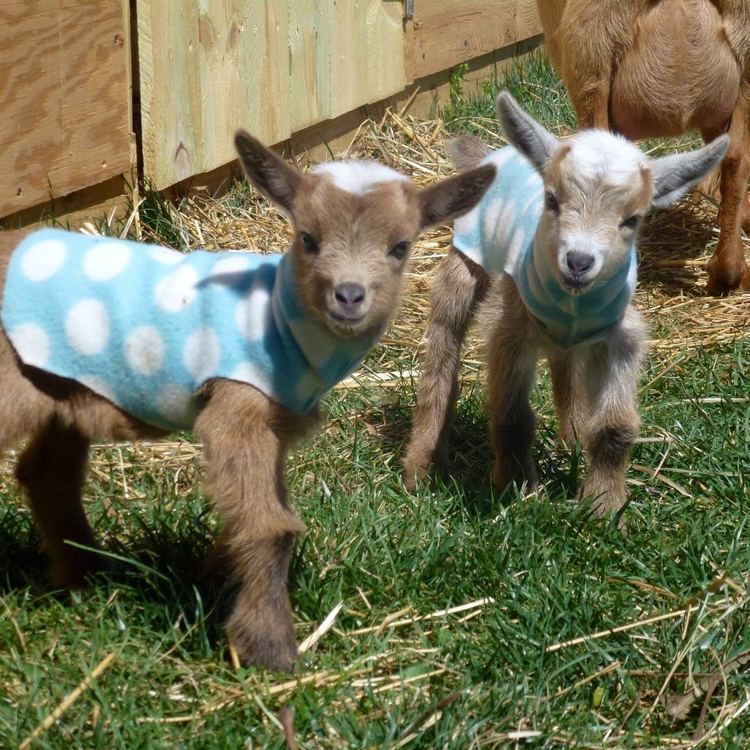Country of origin Nigeria and Niger Scientific name Capra aegagrus hircus Rank Breed | Type Dairy, Pet, Meat Higher classification Goat Countries of origin Nigeria, Niger | |
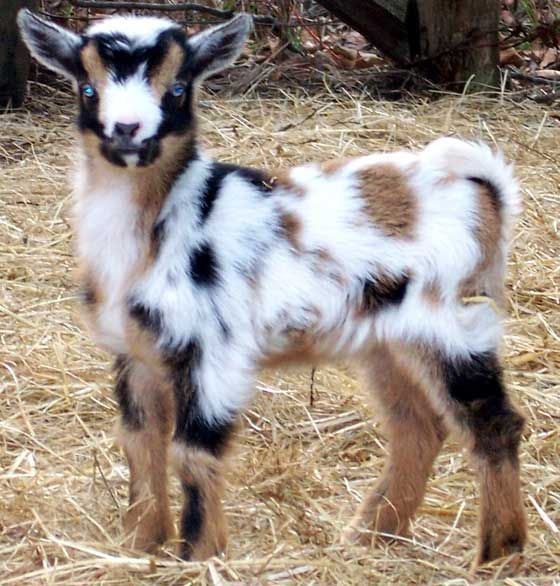 | ||
Height Male: 19–23.5 inches (48–60 cm)Female: 17–22.5 inches (43–57 cm) Similar Pygmy goat, American Lamancha goat, Anglo‑Nubian goat, Boer goat, Saanen goat | ||
The Nigerian Dwarf goat is a miniature dairy goat breed of West African ancestry. The original animals were transported from Africa on ships as food for captured carnivores being brought to zoos; the survivors were then maintained in herds at those zoos. Nigerian Dwarf goats are popular as pets and family milkers due to their easy maintenance and small stature. However, because of their high butterfat, they are also used by some dairies to make cheese. They are registered by the American Dairy Goat Association, the American Goat Society, and the Nigerian Dwarf Goat Association.
Contents
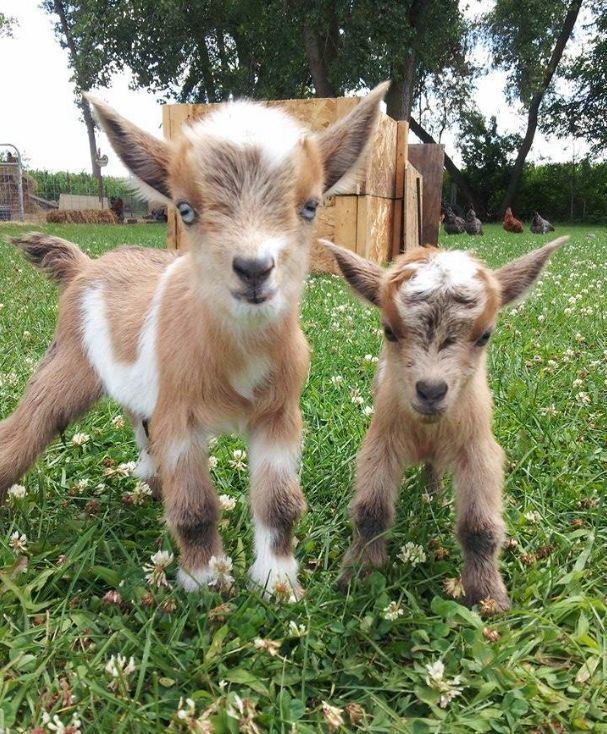
Nigerian dwarf goat successful breeding with hunch behavior
Characteristics
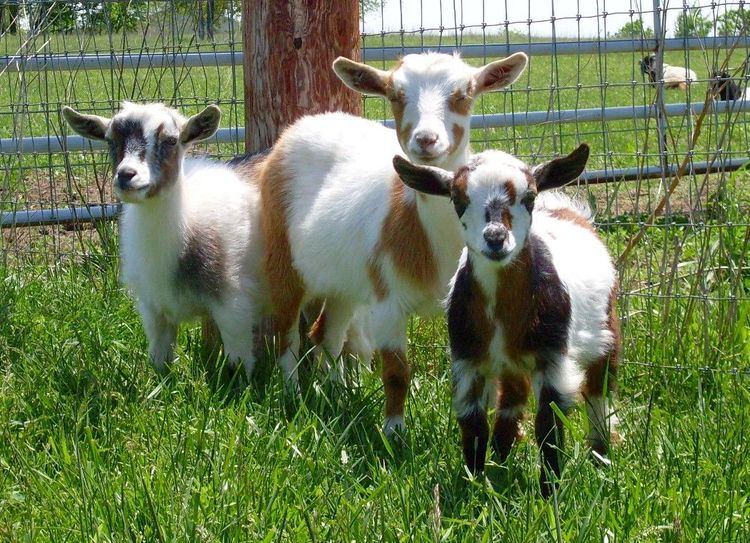
There are two different height standards for the Nigerian Dwarf goat. The height standard maintained by the American Goat Society and the American Dairy Goat Association requires does to be less than 22.5 inches (57 cm) at the withers, and bucks to be less than 23.5 inches (60 cm) at the withers. The Nigerian Dwarf Goat Association states does should ideally be 17–19 inches (43–48 cm) in height, with a maximum allowed height of 21 inches (53 cm), and bucks should ideally be 19–21 inches (48–53 cm), with a maximum allowed height of 23 inches (58 cm).
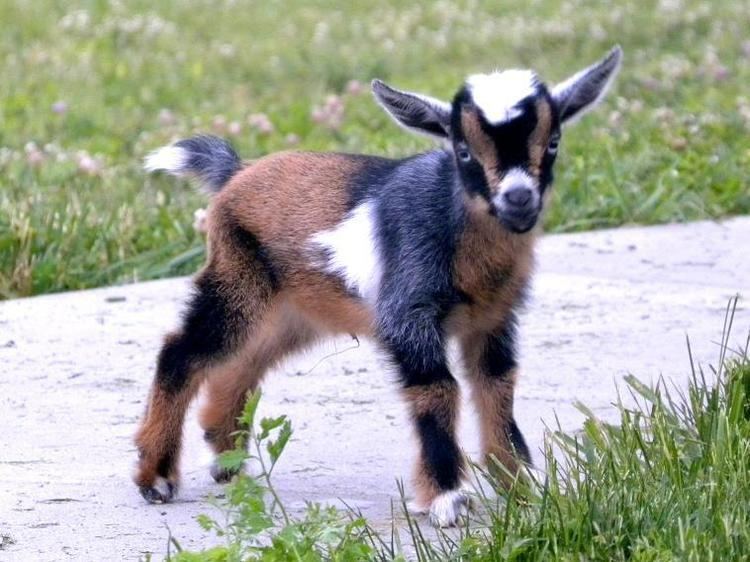
They come in many colors: white, black, gold, red, cream and patterns such as buckskin (brown with a black cape over the head and neck along with other black markings) and chamoisee (similar to an Oberhasli goat), with or without white spots. Some have white "frosting" on the ears. Both the Nigerian Dwarf Goat Association and the American Goat Society websites feature pages that include color descriptions, disqualifying features and conformation. Although most are naturally horned, generally breeders disbud them at a young age (usually less than 2 weeks of age) for safety to the goat, its herd mates, and human caregivers. Some Nigerian Dwarf goats have blue eyes, which is a dominant trait in goats.
Milk
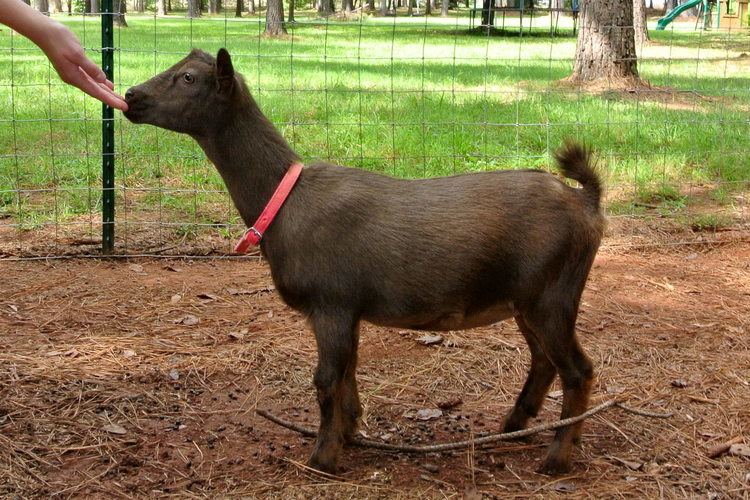
Nigerian Dwarf does give a surprising quantity of milk for their size. Their production ranges from 1 to 8 pounds of milk per day (one quart of milk weighs roughly 2 pounds), with an average doe producing about 2.5 pounds of milk per day. Production depends upon genetics, how many times the doe has freshened (given birth), quality and type of feed, and general good management. Since Nigerians breed year-round, it is easy to stagger freshening in a herd for year-round production of milk. Thus, they are ideal milk goats for most families. Their milk has a higher butterfat content than milk from full-sized dairy goats, averaging 6.5% according to the American Dairy Goat Association. Later in lactation, butterfat can go up to 10% or even higher. This makes Nigerian Dwarf goat milk excellent for cheese, soap and cream making.
Behavior

Nigerian Dwarf goats are gentle and easily trainable. This, along with their small size and colorful appearance, makes them popular as pets. Some breeders bottle-feed kids, which makes them more bonded with humans. Others prefer to let their mothers raise them naturally, finding bottle-fed kids to be overly clingy. With either method, they can be very friendly and can easily be trained to walk on a leash and some enjoy coming into the house with their owners. Adult goats should not live in the house. As ruminants, they need to spend a large part of the day eating hay, pasture, or browse.
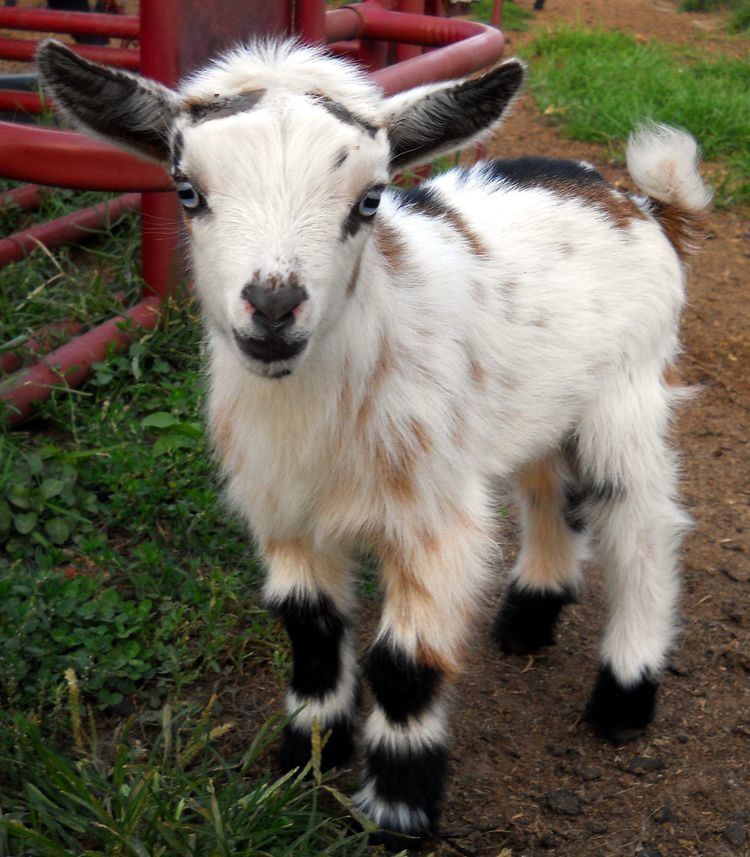
Nigerian dwarf goats' small size also makes them excellent "visitor" animals for nursing homes and hospitals. Some goat supply houses even sell small harnesses and tiny wagons that fit Nigerian dwarf goats. Nigerian dwarf goats are also used in Goat Yoga classes, a form of Animal-Assisted Therapy. As with all goats, does or neutered males (wethers) make the best pets, as bucks can have an objectionable odor. Nigerian Dwarfs, especially does and wethers, do well with children. Nigerian dwarfs also are easy birthers with very few birthing problems.
